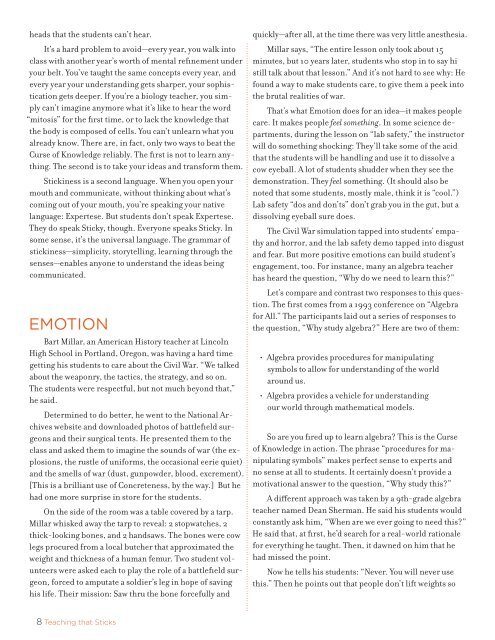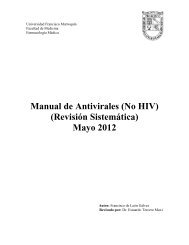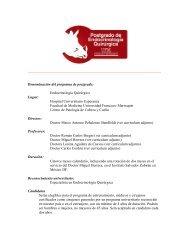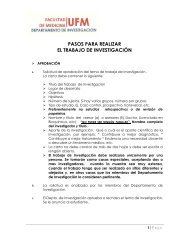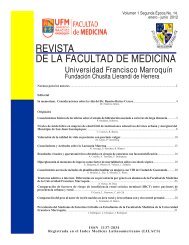Teaching That Sticks (pdf)
Teaching That Sticks (pdf)
Teaching That Sticks (pdf)
- No tags were found...
Create successful ePaper yourself
Turn your PDF publications into a flip-book with our unique Google optimized e-Paper software.
heads that the students can’t hear.<br />
It’s a hard problem to avoid—every year, you walk into<br />
class with another year’s worth of mental refinement under<br />
your belt. You’ve taught the same concepts every year, and<br />
every year your understanding gets sharper, your sophistication<br />
gets deeper. If you’re a biology teacher, you simply<br />
can’t imagine anymore what it’s like to hear the word<br />
“mitosis” for the first time, or to lack the knowledge that<br />
the body is composed of cells. You can’t unlearn what you<br />
already know. There are, in fact, only two ways to beat the<br />
Curse of Knowledge reliably. The first is not to learn anything.<br />
The second is to take your ideas and transform them.<br />
Stickiness is a second language. When you open your<br />
mouth and communicate, without thinking about what’s<br />
coming out of your mouth, you’re speaking your native<br />
language: Expertese. But students don’t speak Expertese.<br />
They do speak Sticky, though. Everyone speaks Sticky. In<br />
some sense, it’s the universal language. The grammar of<br />
stickiness—simplicity, storytelling, learning through the<br />
senses—enables anyone to understand the ideas being<br />
communicated.<br />
EMOTION<br />
Bart Millar, an American History teacher at Lincoln<br />
High School in Portland, Oregon, was having a hard time<br />
getting his students to care about the Civil War. “We talked<br />
about the weaponry, the tactics, the strategy, and so on.<br />
The students were respectful, but not much beyond that,”<br />
he said.<br />
Determined to do better, he went to the National Archives<br />
website and downloaded photos of battlefield surgeons<br />
and their surgical tents. He presented them to the<br />
class and asked them to imagine the sounds of war (the explosions,<br />
the rustle of uniforms, the occasional eerie quiet)<br />
and the smells of war (dust, gunpowder, blood, excrement).<br />
[This is a brilliant use of Concreteness, by the way.] But he<br />
had one more surprise in store for the students.<br />
On the side of the room was a table covered by a tarp.<br />
Millar whisked away the tarp to reveal: 2 stopwatches, 2<br />
thick-looking bones, and 2 handsaws. The bones were cow<br />
legs procured from a local butcher that approximated the<br />
weight and thickness of a human femur. Two student volunteers<br />
were asked each to play the role of a battlefield surgeon,<br />
forced to amputate a soldier’s leg in hope of saving<br />
his life. Their mission: Saw thru the bone forcefully and<br />
quickly—after all, at the time there was very little anesthesia.<br />
Millar says, “The entire lesson only took about 15<br />
minutes, but 10 years later, students who stop in to say hi<br />
still talk about that lesson.” And it’s not hard to see why: He<br />
found a way to make students care, to give them a peek into<br />
the brutal realities of war.<br />
<strong>That</strong>’s what Emotion does for an idea—it makes people<br />
care. It makes people feel something. In some science departments,<br />
during the lesson on “lab safety,” the instructor<br />
will do something shocking: They’ll take some of the acid<br />
that the students will be handling and use it to dissolve a<br />
cow eyeball. A lot of students shudder when they see the<br />
demonstration. They feel something. (It should also be<br />
noted that some students, mostly male, think it is “cool.”)<br />
Lab safety “dos and don’ts” don’t grab you in the gut, but a<br />
dissolving eyeball sure does.<br />
The Civil War simulation tapped into students’ empathy<br />
and horror, and the lab safety demo tapped into disgust<br />
and fear. But more positive emotions can build student’s<br />
engagement, too. For instance, many an algebra teacher<br />
has heard the question, “Why do we need to learn this?”<br />
Let’s compare and contrast two responses to this question.<br />
The first comes from a 1993 conference on “Algebra<br />
for All.” The participants laid out a series of responses to<br />
the question, “Why study algebra?” Here are two of them:<br />
• Algebra provides procedures for manipulating<br />
symbols to allow for understanding of the world<br />
around us.<br />
• Algebra provides a vehicle for understanding<br />
our world through mathematical models.<br />
So are you fired up to learn algebra? This is the Curse<br />
of Knowledge in action. The phrase “procedures for manipulating<br />
symbols” makes perfect sense to experts and<br />
no sense at all to students. It certainly doesn’t provide a<br />
motivational answer to the question, “Why study this?”<br />
A different approach was taken by a 9th-grade algebra<br />
teacher named Dean Sherman. He said his students would<br />
constantly ask him, “When are we ever going to need this?”<br />
He said that, at first, he’d search for a real-world rationale<br />
for everything he taught. Then, it dawned on him that he<br />
had missed the point.<br />
Now he tells his students: “Never. You will never use<br />
this.” Then he points out that people don’t lift weights so<br />
8 <strong>Teaching</strong> that <strong>Sticks</strong>


